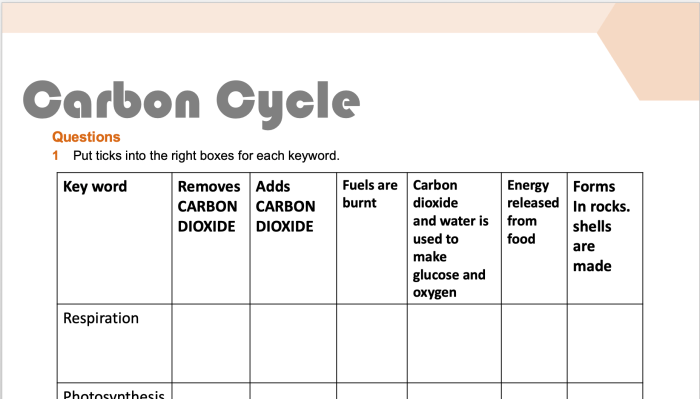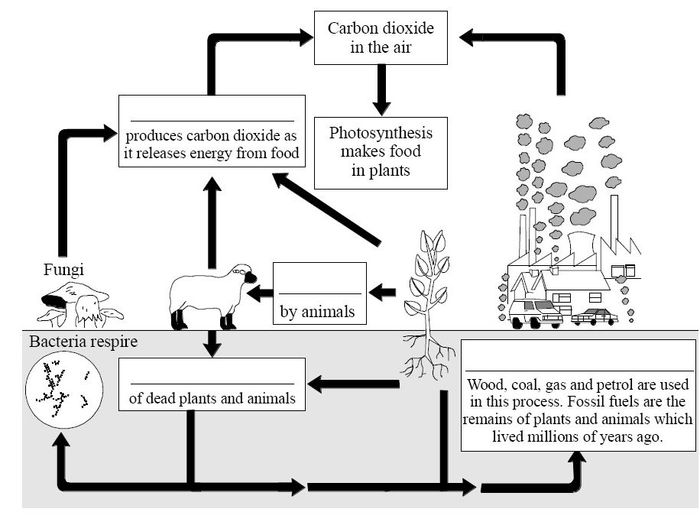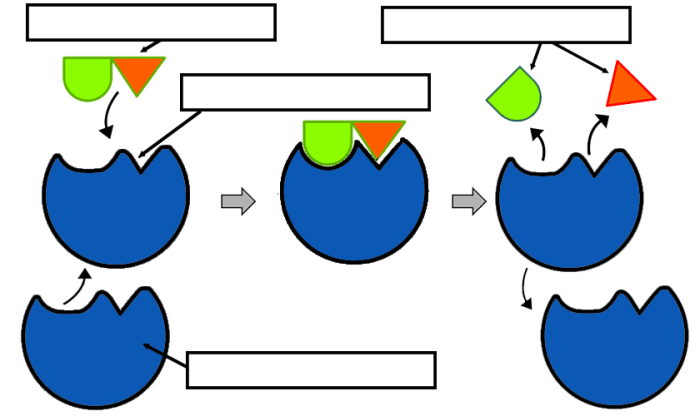Analyzing graphics the carbon cycle answer key – Delving into the realm of analyzing graphics to decipher the intricacies of the carbon cycle, this comprehensive guide embarks on an enlightening journey, unraveling the complexities of this fundamental process through the lens of data visualization and statistical analysis.
Graphics serve as a powerful tool in the analysis of the carbon cycle, enabling researchers to visualize complex data, identify patterns, and draw meaningful conclusions about the interplay between human activities and the environment.
Introduction

Understanding the carbon cycle is crucial for comprehending the Earth’s climate system and predicting future climate change. Graphics play a vital role in analyzing the carbon cycle, enabling scientists to visualize and interpret complex data.
Data Collection

Data on the carbon cycle can be collected through various methods:
- Satellite imagery and remote sensing:Provides information on vegetation cover, land use changes, and atmospheric carbon dioxide concentrations.
- Field measurements:Direct measurements of carbon fluxes in forests, oceans, and soils.
- Laboratory experiments:Controlled studies to investigate carbon cycling processes.
Data Analysis

Statistical techniques are used to analyze carbon cycle data:
- Regression analysis:Determines relationships between carbon fluxes and environmental variables.
- Time series analysis:Identifies trends and patterns in carbon cycle data over time.
- Machine learning algorithms:Can predict future carbon fluxes based on historical data.
Visualization

Graphics are essential for visualizing and interpreting carbon cycle data:
- Tables:Summarize key findings and compare different scenarios.
- Graphs:Illustrate trends in carbon fluxes, such as line charts, bar charts, and scatterplots.
- Maps:Show spatial patterns of carbon cycling processes.
Interpretation
Interpreting the results of carbon cycle analysis is crucial:
- Identify relationships between human activities and the carbon cycle:Quantify the impact of deforestation, fossil fuel burning, and land use changes.
- Predict future climate change:Estimate the potential impacts of increasing carbon dioxide concentrations on temperature, sea level, and extreme weather events.
- Identify areas for further research:Determine gaps in knowledge and prioritize future research directions.
Expert Answers: Analyzing Graphics The Carbon Cycle Answer Key
What are the key benefits of using graphics to analyze the carbon cycle?
Graphics provide a visual representation of complex data, making it easier to identify trends, patterns, and relationships that might not be apparent from numerical data alone.
How can statistical techniques enhance the analysis of carbon cycle data?
Statistical techniques, such as regression analysis and time series analysis, allow researchers to quantify relationships between variables, test hypotheses, and make predictions about future carbon cycle dynamics.
What role does machine learning play in analyzing graphics of the carbon cycle?
Machine learning algorithms can be used to identify patterns and relationships in large datasets, aiding in the development of predictive models and improving our understanding of the carbon cycle.